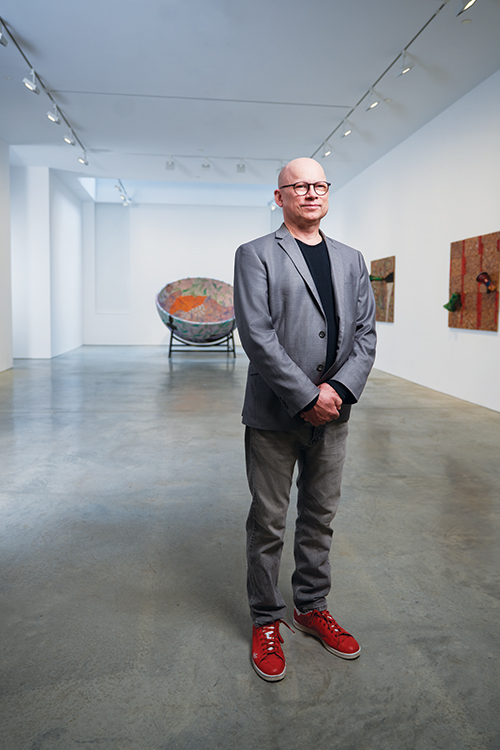
Growing up, Gregory Volk ’81 spent his summers in charge of the penny arcade at Sherman’s Amusement Park in the Adirondack Mountains. It was a family business, and everyone had a job to do. Volk made change for customers and repaired the arcade machines. The experience, Volk says, laid the groundwork for his career writing about art.
“Our modest, out-of-the-way town was lit up with the glowing Ferris wheel and the carousel with its original horses,” he says. “That was my first real experience of transformative visual culture.”
Volk never took an art class at Colgate, but he still reflects on what he learned in his literature classes with Peter Balakian, the Donald M. and Constance H. Rebar Professor in humanities and professor of English. “Colgate prepared me to develop my interest in art, literature, and creativity by honing my critical acumen,” Volk says.
After earning a master’s degree in English and American literature from Columbia University, he landed a job transcribing poems for poet Stanley Moss, who was also an art dealer. Seeing paintings up close — Volk once hauled an El Greco up the stairs — ignited a passion. He was soon writing about art for a small Brooklyn newspaper. An editor for ARTnews spotted one of Volk’s articles and hired him. This eventually led to extensive writing for Art in America and the online journal Hyperallergic. He has also penned many artists’ catalogs.
Volk considers himself an art writer, not a critic. He writes about exhibitions, artists, and artwork that he believes are important and wants readers to understand. In today’s world, “visual culture is fundamental in every way,” he says. “We are inundated with images.”
Volk lives in Williamsburg, Brooklyn, alongside a community of talented artists, many of whom he has befriended. It was there that he met German painter Katharina Grosse in 1995, at the beginning of her career. In his new book, Katharina Grosse (Lund Humphries Publishers, 2020), he focuses on her signature works: intensely colorful, large-scale painting installations, which are spray-painted on walls, floors, ceilings, stairs, windows, and outdoor spaces.
For her piece titled Rockaway, Grosse spray-painted — in red, white, and magenta — a derelict former military building in New York City that had been damaged by a storm linked to global warming. The work, Volk says, conjured sunsets, ocean spray, sweeping wind, and surging tides. At an art space in Australia, she covered a 27,000-square-foot area with spray-painted fabric in swirling colors. Grosse’s installations, most of which are temporary, “function as enticing social spaces in which people gather, converse, rejoice, and are rejuvenated,” Volk writes.
During the pandemic, Volk has missed the trips he takes each year to see exhibitions in other countries, especially Poland and Iceland, about which he has written often. He recently made one of his first forays back to seeing art in person outside New York when he drove 13 hours to Louisville, Ky., to see the Speed Art Museum’s exhibition reflecting on the life of Breonna Taylor and her killing in 2020. “Art can shift one’s consciousness and induce not just pleasure but catharsis and transformation,” he says. “It engages our fraught and complicated times.”
